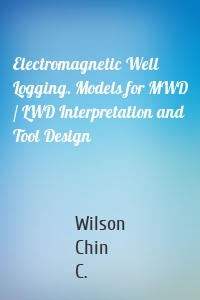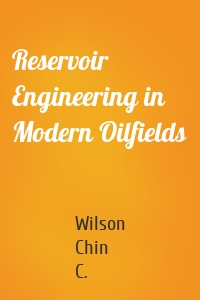Wilson Chin C.
11 кн.
Formation Testing
Traditional well logging methods, such as resistivity, acoustic, nuclear and NMR, provide indirect information related to fluid and formation properties. The “formation tester,” offered in wireline and MWD/LWD operations, is different. It collects actual downhole fluid samples for surface analysis, and through pressure transient analysis, provides direct measurements for pore pressure, mobility, permeability and anisotropy. These are vital to real-time drilling safety, geosteering, hydraulic...
| Автор | Wilson Chin C. |
Formation Testing
Traditional well logging methods, such as resistivity, acoustic, nuclear and NMR, provide indirect information related to fluid and formation properties. The “formation tester,” offered in wireline and MWD/LWD operations, is different. It collects actual downhole fluid samples for surface analysis, and through pressure transient analysis, provides direct measurements for pore pressure, mobility, permeability and anisotropy. These are vital to real-time drilling safety, geosteering, hydraulic...
| Автор | Wilson Chin C. |
Formation Testing
Traditional well logging methods, such as resistivity, acoustic, nuclear and NMR, provide indirect information related to fluid and formation properties. The “formation tester,” offered in wireline and MWD/LWD operations, is different. It collects actual downhole fluid samples for surface analysis, and through pressure transient analysis, provides direct measurements for pore pressure, mobility, permeability and anisotropy. These are vital to real-time drilling safety, geosteering, hydraulic...
| Автор | Wilson Chin C. |
Wave Propagation in Drilling, Well...
Wave propagation is central to all areas of petroleum engineering, e.g., drilling vibrations, MWD mud pulse telemetry, swab-surge, geophysical ray tracing, ocean and current interactions, electromagnetic wave and sonic applications in the borehole, but rarely treated rigorously or described in truly scientific terms, even for a single discipline. Wilson Chin, an MIT and Caltech educated scientist who has consulted internationally, provides an integrated, comprehensive, yet readable exposition...
| Автор | Wilson Chin C. |
Electromagnetic Well Logging. Model...
Almost all publications on borehole electromagnetics deal with idealizations that are not acceptable physically, and unfortunately, even these models are company proprietary. On the other hand, “exact models” are only available through detailed finite element or finite difference analysis, and more often than not, simply describe case studies for special applications. In either case, the models are not available for general use and the value of the publications is questionable. This new approach...
| Автор | Wilson Chin C. |
Measurement While Drilling. Signal...
Trade magazines and review articles describe MWD in casual terms, e.g., positive versus negative pulsers, continuous wave systems, drilling channel noise and attenuation, in very simple terms absent of technical rigor. However, few truly scientific discussions are available on existing methods, let alone the advances necessary for high-data-rate telemetry. Without a strong foundation building on solid acoustic principles, rigorous mathematics, and of course, fast, inexpensive and efficient...
| Автор | Wilson Chin C. |
Reservoir Engineering in Modern Oil...
Real-world reservoirs are layered, heterogeneous and anisotropic, exposed to water and gas drives, faults, barriers and fractures. They are produced by systems of vertical, deviated, horizontal and multilateral wells whose locations, sizes, shapes and topologies are dictated «on the fly, at random»by petroleum engineers and drillers at well sites. Wells may be pressure or rate-constrained, with these roles re-assigned during simulation with older laterals shut-in, newer wells drilled and brought...
| Автор | Wilson Chin C. |
Modern Borehole Analytics
Wilson C. Chin has written some of the most important and well-known books in the petroleum industry. These books, whose research was funded by the U.S. Department of Energy and several international petroleum corporations, have set very high standards. Many algorithms are used at leading oil service companies to support key drilling and well logging applications. For the first time, the physical models in these publications, founded on rigorous mathematics and numerical methods, are now...
| Автор | Wilson Chin C. |
Resistivity Modeling
Resistivity logging represents the cornerstone of modern petroleum exploration, providing a quantitative assessment of hydrocarbon bearing potential in newly discovered oilfields. Resistivity is measured using AC coil tools, as well as by focused DC laterolog and micro-pad devices, and later extrapolated, to provide oil saturation estimates related to economic productivity and cash flow. Interpretation and modeling methods, highly lucrative, are shrouded in secrecy by oil service companies –...
| Автор | Wilson Chin C. |












